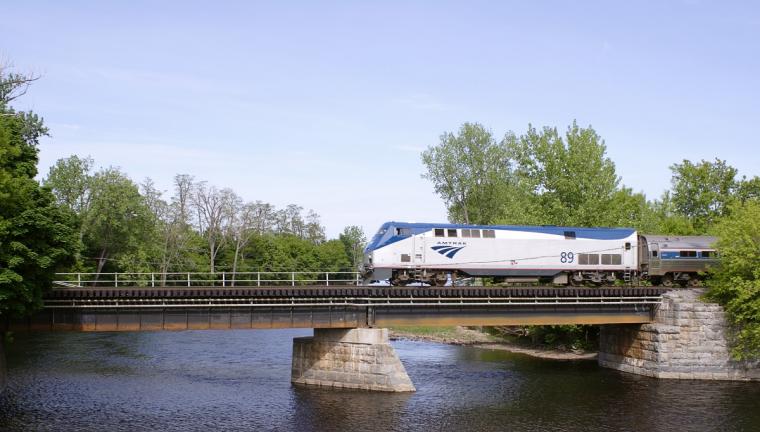
One of the side effects of the pandemic (and particularly in the wake of the pandemic, when travel was surging but airlines suffered from exorbitant fares and massive disruptions) was the movement of travelers away from airlines, and toward other forms of transit, one of which was rail. With fewer regulations concerning baggage, carry-ons and documentation, rail travel spiked.
Now, a possible strike is looming, and as a result, Amtrak has announced disruptions to its national network.
The backstory: This is actually not about Amtrak. It’s about freight rail workers, who are threatening to strike for higher pay, more generous paid leave, and a renegotiation of strict attendance policies and broader working conditions.
Amtrak owns and operates much of its own track in the busy Northeast Corridor between Washington and Boston, but elsewhere it crosses the country on tracks owned by freight lines. Those freight tracks likely wouldn’t be available to passenger trains in the event of a widespread strike.
NBC News reports that Amtrak, even though it is not a party in the labor dispute, said that a strike that could begin Friday "could significantly impact" its intercity passenger rail service, since it operates almost all of its 21,000 route miles outside the Northeast Corridor "on track owned, maintained, and dispatched by freight railroads."

And that is the big problem. According to the Washington Post, Amtrak announced interruptions beginning Tuesday on its national network. The passenger railroad said it is pulling trains on three long-distance routes “to avoid possible passenger disruptions while on route.”
“These initial adjustments … could be followed by impacts to all Long Distance and most State-Supported routes,” Amtrak said in a statement to the Post. “These adjustments are necessary to ensure trains can reach their terminals prior to freight railroad service interruption if a resolution in negotiations is not reached.”
The White House has become involved, with officials working to avoid the potential for a strike and the disruption it could cause.
Most travel within the Northeast Corridor would not be affected, Amtrak told Post reporters. However, minor schedule changes are expected on a small number of Northeast Regional trains serving destinations from Virginia to Boston. But moving westward, it is a problem. CNN Business noted that among the routes being suspended are those from Chicago to Los Angeles, Chicago to Seattle, Chicago to San Francisco and a portion of one of its routes that runs from Los Angeles to San Antonio.
The company will let passengers change their reservation for free for departures scheduled through Oct. 31.
And after a summer filled with air travel upheaval, this is the last thing anyone wants to hear. Travelers who have become accustomed to going from place to place by rail have noted the ease and downright civility of that method. Want to travel? Buy a ticket to your destination. No luggage limitations, no charge for Wi-Fi, no TSA lines, no special documentation, no boarding protocols, no restrictions on moving around the cabin, plenty of power outlets – and many stations offer free parking. It became the darling of the tourism world, particularly to families who were moving back and forth regionally to competitions and tournaments, and who did not want to incur airfare expenses as well as travel hassles.
Of course, there are drawbacks to rail: It takes longer to get from place to place and in many cases, passengers must change trains (sometimes more than once) to get to their destinations. Unlike air, it isn’t an easy way to cover a lot of distance.
But that hasn’t stopped trains from gaining in popularity. According to Amtrak, there has been a ridership increase of 28.9 percent over June of 2022 and an increase of 19.8 percent over pre-pandemic ridership in July of 2019.
Additionally, the Washington, DC to Richmond route, which includes stops in Alexandria, Woodbridge, Quantico, Fredericksburg, Ashland, Richmond Staples Mill Station, and Richmond Main Street Station, continues to perform strongly with ridership of 12,848 passengers in July 2022 – an eight percent increase over June and a 26.3 percent increase of July 2019.
A rail strike, however, would not only impact tourism, according to NBC News; but would have a devastating impact on the supply chain.
It “would be an economic disaster — freezing the flow of goods, emptying shelves, shuttering workplaces and raising prices for families and businesses alike," Suzanne Clark, the head of the U.S. Chamber of Commerce, told NBC reporters.
The Association of American Railroads trade group has estimated that shutting down the railroads would cost the economy $2 billion a day.
SDM will continue to follow this developing issue.

